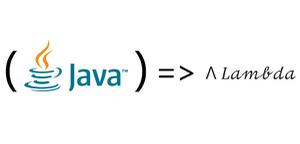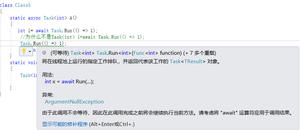asyncio.wait

import threadingimport asyncio
async def hello():
print('Hello world! (%s)' % threading.currentThread())
await asyncio.sleep(1)
print('Hello again! (%s)' % threading.currentThread())
loop = asyncio.get_event_loop()
tasks = [hello(), hello()]
loop.run_until_complete(asyncio.wait(tasks))
loop.close()
以上代码中 loop.run_until_complete(asyncio.wait(tasks)) 为什么不能直接写成 asyncio.wait(tasks)
python doc对asyncio.wait的解释为:
并发运行 aws 指定的 可等待对象 并阻塞线程直到满足 return_when 指定的条件。我的理解是,如果wait能够实现并发运行的效果,那么就没必要用事件循环了,不知道这么理解哪里错了。
如果直接写的话会有以下报错:
yield_from.py:11: RuntimeWarning: coroutine 'wait' was never awaited asyncio.wait(tasks)
RuntimeWarning: Enable tracemalloc to get the object allocation traceback
sys:1: RuntimeWarning: coroutine 'hello' was never awaited
回答:
简单的原因是asyncio.wait的返回类型是一个coroutine,而不是运行后面的tasks,不精确来说,wait的实现是:
async def wait(tasks): # 省略里其他参数 # "并行"运行 tasks
# await 所有 tasks
return
所以应该是await asyncio.wait(tasks),但当前脚本不是一个async的,所以这里并不能这样写。
具体来说,所有协程都是运行在一个线程里,不像多线程那样,由操作系统强制线程暂停执行(挂起)。在协程里,是需要协程主动交出执行权限(可以是协程执行完,或是await,yeild等等)。如果你写了如下代码,那么hello的第二个print永远得不得执行:
#!/usr/local/bin/python3.7import threading
import asyncio
import time
async def hello():
print('Hello world! (%s)' % threading.currentThread(), flush=True)
await asyncio.sleep(2)
print('Hello again! (%s)' % threading.currentThread(), flush=True)
async def run_for_ever():
await asyncio.sleep(1)
while True:
time.sleep(1)
loop = asyncio.get_event_loop()
tasks = [run_for_ever(), hello()]
loop.run_until_complete(asyncio.wait(tasks))
loop.close()
当协程主动交出执行权之后,就需要有管理器管理下一步执行哪一个“就绪”的协程。python并没有提供一个这样的“管理器”,所以就需要我们自行创建一个这样的管理器--事件循环:当一个协程交出执行权之后,事件循环获得执行权,由事件循环决定下一步继续执行那个协程。所以我们需要“手动“(模块)创建事件循环,然后把需要的协程加入到相应的循环(告诉管理器,你需要管理这个协程),最后还需要运行事件循环(把执行权交给”管理器“)。于是,asyncio提供了一个方法(run_until_complete)让我们尽量简单的实现上述步骤。
这也解释了为什么await只能写到async函数中——如果没有事件循环(“管理器”),当前执行权本协程应该交给谁?
以上是 asyncio.wait 的全部内容, 来源链接: utcz.com/p/937748.html






